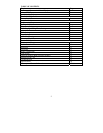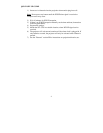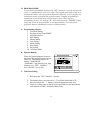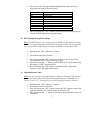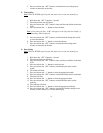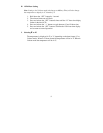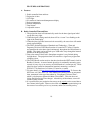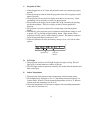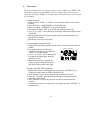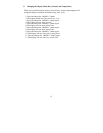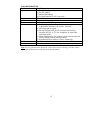
10
FEATURES & OPERATIONS
A. Features
1. Radio-controlled time and date
2. Projection of time
3. LCD light
4. Six modes of date/seconds/temperature display
5. Indoor temperature
6. Remote temperature
7. Dual alarms
8. Adjustable snooze
B. Radio-Controlled Time and Date
1. The projection alarm will automatically search for the time signal upon initial
set-up and every night.
2. When the signal is being received, there will be a “tower” icon flashing to the
right of the time display.
3. When the time signal has been received successfully, the tower icon will remain
steady until midnight.
4. The NIST (National Institute of Standards and Technology—Time and
Frequency Division) WWVB radio station is located in Ft. Collins, Colorado,
and transmits the exact time signal continuously throughout the United States at
60 kHz. The signal can be received up to 2,000 miles away through the internal
antenna in the Projection alarm.
5. Due to the nature of the Earth’s Ionosphere reception is very limited during
daylight hours. The projection alarm will search for a signal every night when
reception is best.
6. The WWVB radio station receives the time data from the NIST Atomic clock in
Boulder, Colorado. A team of atomic physicists is continually measuring every
second, of every day, to an accuracy of ten billionths of a second per day. These
physicists have created an international standard, measuring a second as
9,192,631,770 vibrations of a Cesium-133 atom in a vacuum.
7. For more detail, visit http://www.boulder.nist.gov/timefreq.htm
. To listen to the
NIST time, call (303) 499-7111. This number will connect you to an automated
time, announced at the top of the minute in “Coordinated Universal Time”,
which is also known as Greenwich Mean Time (GMT). This time does not
follow Daylight Saving Time changes. After the top of the minute, a tone will
sound for every second.
8. It is possible that your projection alarm may not be exactly
on the second due to
the variance in the quartz. However, the clock will adjust the quartz timing over
the course of several days to be very accurate; under 0.10 seconds per day.



